Opinion
NEW BISHOP CONSECRATED AS THE FIFTH BISHOP
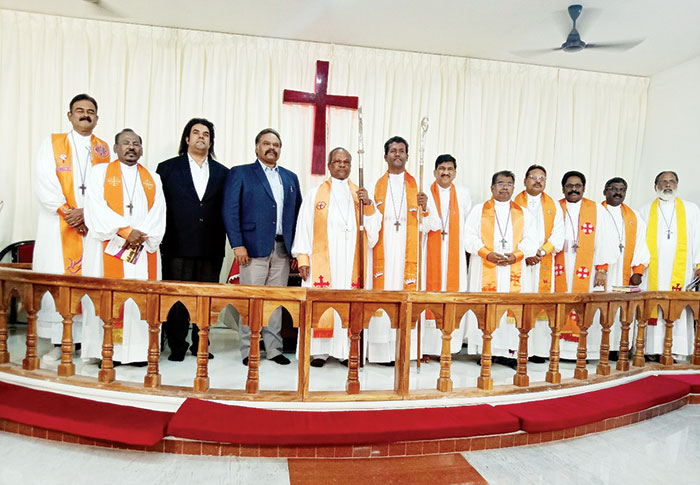
Jaffna Diocese of the Church of South India
@
Platinum Jubilee Chapel
CSI Synod Secretariat, No. 5, Whites Road, Rayapettah, Chennai – 600014
SERVICE OF CONSECRATION
Saturday, the 10th of December, 2022 was a day to be remembered in the annals of the Church of South India, Jaffna Diocese. The names of two candidates in the Revds. David S Solomon and Veluppillai Pathmathayalan, both Presbyters of the Diocese, elected at a specially convened Diocesan Council held on Saturday, the 24th October, 2022 at Otley Hall, Jaffna College, Vaddukoddai, were sent to the CSI Synod for choosing one of them to be fifth bishop. Having completed the procedure, the Rev V Pathmathayalan was chosen, and duly consecrated on Saturday, the 10th of December at 9.30 am at a Service of Consecration held at the Platinum Jubilee Chapel at the CSI Synod Secretariat in Chennai.
The Service Order both in English and Tamil was in THE hands of those present at the service. The opening hymn “The Church’s one foundation is Jesus Christ Her Lord…” was sung after a brief prayer, and the liturgy continued with ‘The Preparation’ with prayers, confession and absolution, followed by the presentation of the Bishop-elect. The Most Rev. Dharmaraj Rasalam, (Moderator and Bishop of the South Kerala Diocese), presided over the Service, and he was assisted by the Rt Rev Dr A Chandrasekaran, (Moderator’s Commissary and Bishop of the Trichy-Tanjore Diocese), who delivered the message, and a few other clergy and Bishops participated in different aspects of the service.
Three clergymen- Rev William Jebasingh Samuvel, Rev Sathees Daniel and Rev Thirunavukkarasu Dixon, representing the Jaffna Diocese presented the Bishop-elect, with the words:
“Reverend Bishop in God, we present to you this godly and learned person to be consecrated Bishop.”
Then the General Secretary of the Synod, Advocate C Fernandas Rathina Raja read the instruments of election and appointment. The presiding Bishop then asked the congregation,
“Do you trust that Rev Pathmathayalan, by God’s grace, worthy to be consecrated?”
The congregation responded with the words,
“We trust that he is worthy, To God be the glory.”
This was followed by ‘The Ministry of the Word’ in which four Scripture portions were read in the order,
· Old Testament: Ezekiel 34: 11-16
· Epistle: Acts 20: 28-35
· Psalm 119: 105-112
· The Gospel: John 20: 19-23
The sermon was delivered by the Rt Rev Dr A Chandrasekaran, emphasising on three aspects of episcopal ministry, namely,
-office of a Bishop is for the ministry of Christ, the Good Shepherd;
-a Bishop is to identify with people of diverse background, especially with the oppressed;
-a Bishop is essentially an Evangelist, proclaiming the Gospel in word and deed.
After a silent reflection, the Nicene Creed was said by all. A Tamil number, “Nallaavi uutrum theva…” After this, the presiding bishop conducted the examination of the Bishop-elect, admonishing the “Calling and Purpose”, warranted by the Scripture, responded in faith and confidently answering to each admonition, “I will, God being my helper“
This was followed by THE CONSECRATION, of which the hymn “Come Holy Ghost, our souls inspire…” was sung with solemnity, and the laying on of hands by Bishops and Presbyters, the presiding bishop said:
“Send down your holy spirit upon your servant, Rev Dr V Pathmathayalan, whom we, in your name, and in obedience to your most blessed will, do now ordain and consecrate Bishop in your Church”
Bishop put on the episcopal stole on the new bishop, and the pectoral cross. Then, the Moderator delivered the new bishop the Bible and the Pastoral Staff. He also gave the right hand of fellowship. Then he led the new bishop to the Bishop’s Chair, seated him with the words:
“We declare that Rev Dr V Pathmathayalan is a Bishop in the Church of God,
in the name of the father, of the Son, and of the Holy Spirit;
With a loud voice, “Amen. Thanks be to God.” This was concluded with the singing of the Doxology.
THE INSTALLATION OF THE BISHOP
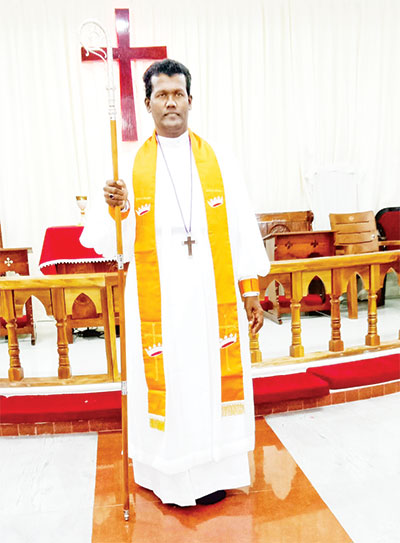
The Rt. Rev. Dr. Veluppillai Pathmathayalan MA, BD, MTh, DD
Born: 26th March, 1971; Consecrated: 10th December, 2022
Bishop, Jaffna Diocese of the Church of South India
“Come, let us rebuild the wall of Jerusalem, so that we may
no longer suffer disgrace.” (Nehemiah 2:17b)
The newly consecrated Bishop was led to an episcopal chair. As he assumed his seat, the people also sat. The Lay Secretary welcomed the new bishop, with the words:
“Reverend Bishop in God, we rejoice that you have been lawfully appointed, consecrated and installed, as Bishop of the Jaffna Diocese of the Church of South India. You have promised to fulfil the duties of your office in accordance with the constitutions of the Church of South India, and the Constitution of the Diocese of Jaffna, and as representatives of the whole diocese we promise you all due honour and obedience.”
The representatives of the Jaffna Diocese said in turn in unison:
On behalf of the members of the diocese, we accept you, Rt Rev Dr V Pathmathayalan duly consecrated and installed Bishop of the Church of South India in the Diocese of Jaffna and acknowledge the authority committed to you lawfully to exercise your office, and promise you all due honour and obedience, praying that every member of the church in Sri Lanka may be faithful servant of Christ and a witness to his resurrection.
The new Bishop in response, said:
In thankfulness to God, and trusting his grace I renew the promise which I have made to fulfil the ministry committed to me this day in accordance with the Constitution of the Church of South India and the Constitution of the Diocese of Jaffna so help me God. AMEN.
The Lord’s Supper continued with a Congregational song Thanthaen ennai yesuvae, intha neram umakkae, followed by ‘intercessory prayers’. The keerthanai, Ka.rtharin panthiyil vaaa… was sung in preparation for ‘The Breaking of the Bread.’ The members of the congregation were invited to share the Blessed Bread and Wine, and the post-Communion prayer was said by all. The concluding hymn “All hail the power of Jesus name” brought the service to a conclusion with the Benediction from the presiding Bishop, Most Rev Dharmaraj Rasalam.
VOTE OF THANKS
The newly consecrated bishop expressed his sincere thanks by honouring each person participated in the service. As Rev W Jebasingh Samuvel invited each person, Bishop Pathmathayalan covered with a ‘shawl’ that symbolised the honour bestowed for what everyone has done to make the service a solemn and Spirit-filled event of a life time.
To God be the glory!
Opinion
‘Ethnicity’ can no longer ‘hold voter’
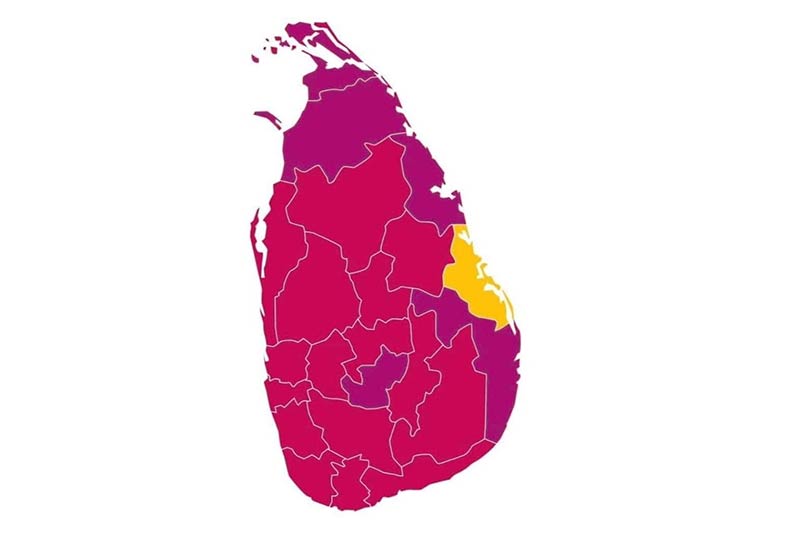
“Even in the modern world which, due to advancement in Science, has all the opportunities for comfortable living, man has to suffer because of this disease of nationalism and its inevitable political tentacles.”– Dr E.W. Adikaram
by Susantha Hewa
It’s hard to find in history instances where people in their numbers have cast off their outer shell of ethnicity (as well as religion) to change systems. It goes without saying that people enjoy an immense sense of fellow feeling when they jointly celebrate victories of cricket and other triumphs. However, the results of the recently concluded parliamentary election clearly showed people from all Tamil dominated Northern districts and Muslim dominated Eastern districts coming together spiritedly to back the NPP from the Sinhala dominated South. They have joined hands against their perceived political oppressors- which is nothing short of spectacular, given the obstinacy of our ethnic and other prejudices.
Sri Lanka has set an example of the above rare feat at the recent general election. It’s reassuring that many Sri Lankans are awakening to the reality that ethnicity is a veneer largely of a cultural and political making and not of biological making as we are generally made to consume. Most scientists agree that ethnicity is not a biological category but a socially constructed identity. Modern research demonstrates that the concept of race/ethnicity is a social construct without any scientific basis.
According to medical researchers A. Smedley and B.D. Smedley, people generally think that “population differences in health and intelligence are the result of immutable, biologically based differences between ‘racial’ groups, despite overwhelming evidence that racial groups are not genetically discrete, reliably measured or scientifically meaningful”. Enthusiastic believers of ethnic differences have their work cut out to disprove a substantial body of scientific evidence against ethnicity being a biological category. The fact is, our culturally constructed and politically pampered bigotry about ethnicity has been proving too resilient for insights from science slowly trickling down to our collective consciousness.
After all, scientific knowledge cannot be imposed on you like ‘ethnicity’ or religion; nor can it be made politically expedient to keep people in ignorance. The anthropologist, Prof. Robert Wald Sussman says “Being antiracist is not simply political correctness, it is proven science” (The Myth of Race: The Troubling Persistence of an Unscientific Idea). At last, Sri Lanka’s parliamentary democracy, tested rigorously at a general election, has proved to be a measure of the progressivity and the political awakening of a fragmented populace and served as a valuable precursor of unity rather than division. Most importantly, it has stumped many of those who are still charmed by the supposed imperishability of the deep-rooted perception of ethnicity. All those who wish to see the blossoming of an enlightened community without self-debilitating and inherited biases, the November 14 election will be a cultural awakening, if not a significant turning point in politics.
The age-old myth of ‘ethnicity’ being synonymous with “language” can no longer hold water. Language is the finest medium of human communication and it can do very well without acquiring any unintentional indignity of interlanguage enmity. As languages, there is no conflict between languages, i.e. English, Mandarin, Hindi, Spanish, Tamil, Sinhala, Bengali, Urdu, Ainu, Njerep or even Lemerig, no matter how widely or sparsely they are spread and spoken. Languages keep enriching one another by mixing with and borrowing from (no obligation to return) the others.
However, unfortunately, we, who have no choice but acquiring the language of our parents or the guardians, often grow up with the false idea of being distinctly different from those who speak other languages, which is tragically misunderstood as being rooted in genetics. It is heartening that history has instances, however rare, of proving such tenacious myths untenable. The recent election is a case in point.
All those who have transcended their socially inherited biases in showing their unity to halt sociocultural and political stagnation of a nation have done Sri Lanka proud. It shows their political acumen sharpened primarily by economic woes. It is no mean feat for individuals in a society to have overcome the alluring biases they are steeped in, be they religious, caste-based or ethnic – the cast-iron biases that lull us into a false sense of belonging while actually alienating us from others for imagined differences.
In his book ‘Annihilation of caste’, Dr. B.R. Ambedkar, who was a fierce critic of the caste system in India, writes, “Brahminism… is the very negation of the spirit of Liberty, Equality and Fraternity”. And, commenting on Dr. Ambedkar’s statement above, Arundhati Roy, an admirer of Dr. Ambedkar, says, “Brahminism precludes the possibility of social or political solidarity across caste lines. As an administrative system, it is pure genius” (The doctor and the saint). What both of them condemn as deeply harmful is the flourishing of entrenched biases when they are interlaced with politics, where the connections may be apparent or more devious than meets the eye. As many would agree, Brahminism may perhaps not have been unique in strangling the life and freedoms of people in human history, with the complicity of repressive systems of governance. Skin colour, race, ethnicity, religion – all have been equally capable of being subjugated by politics to keep the people in prolonged servitude.
Let’s hope that, in Sri Lanka, as well as in other parts of the world, there will be a gradual diminution of equally incapacitating biases, which would otherwise continue to keep the masses in their deadly grip, thus hampering their progress towards civilsation.
Opinion
Parlimentary election:Narrative of NPP’s convincing win in Jaffna

by Ayampillai Dharmakulasingham,
Retired Sri Lankan career diplomat
The writer made a correct prediction: ‘The President’s party, the National People’s Power (NPP), is expected to win significantly in the upcoming general election’ ( The Island, Nov. 7). Similarly, the writer anticipated that the NPP would secure more than 135 seats in the parliamentary election (Veerakesari, Nov. 9). Naturally, many are eager to understand the dynamics that enabled the President’s party to make history in a proportional representation election, specifically defeating the major Tamil parties in Jaffna.
The NPP is the first political party to achieve a two-thirds majority under proportional representation, winning 21 out of 22 electoral districts. Not only has it secured a two-thirds majority in Parliament, but it also garnered 6,863,186 votes and claimed 159 seats, including those from the national list. This is indeed an unprecedented victory in many respects. However, the significant win in the Jaffna-Kilinochchi electoral district, where the NPP outperformed the popular Ilankai Thamil Arasu Kadchi (Federal Party) and other Tamil parties, has become a major talking point among common masses in southern Sri Lanka, Tamil diaspora, political commentators, diplomatic and media sources.
The combined factors that contributed to the significant victory in the Jaffna-Kilinochchi district can be attributed to several politically important reasons. Tamil parties have been vocal in criticising major national parties, such as the United National Party, Sri Lanka People’s Party, Sri Lanka Freedom Party, and even the National People’s Power, as Sinhalese racist parties. Their primary accusation has been that these parties will not uphold the rights of the Tamil people. However, the ground situation tells a different story. Internal rivalry, infighting among major Tamil parties over issues such as the allocation of parliamentary seats, internal dominance, and the vested interests of party leaders has alienated a significant number of Tamil people from these traditional parties. Social media has played a constructive role in shaping public opinion. Additionally, some prominent Tamil leaders have been accused of secretly obtaining liquor permits from ministers and high-ranking government officials, prompting Tamil people to reconsider their political loyalties. Another important factor is that many Tamil leaders, wealthy businessmen, and members of elite services such as the Sri Lanka Administrative Service and other similar services own properties and businesses in the south, particularly in Colombo and neighbouring cities. The narrative of Tamils losing their rights contrasts sharply with the reality that a significant portion of the Tamil elite owns properties in Colombo and other cities, co-habiting with Sinhalese neighbours, undermining the ‘rights’ rhetoric. Over time, people have gradually distanced themselves from these traditional parties, though they lacked a viable alternative. The entry of the NPP, with its popular leader Anura Kumara Dissanayake, has offered a new option, and he is perceived as a leader who can be trusted.
The ‘rights’ rhetoric has lost its weight, and while the people of Jaffna seem to recognise that the problems created by 40 years of internal conflict need to be resolved, they also understand that the social and economic challenges faced by those in the south are not different from their own. The people of Jaffna have silently endured hardships, as the general political approach of Tamil leaders has often neglected the true suffering of the populace. Issues such as the demand for separation, the encouragement of young Tamil youths to take up arms, the resulting death and destruction, the entry of Indian troops into Sri Lanka, the widespread suffering, and the final episode at Mullivaikal with the elimination of the Tamil Tiger movement have not been critically analysed by so-called Tamil academics and reputed journalists. Meanwhile, social media has bridged the gap, and Tamils are no longer willing to accept what their leaders promote. Other factors, such as rampant corruption in the northern public service and a lack of commitment to addressing people’s needs, have also awakened public awareness. It is relevant to look back at the 1970s when the popular Mayor of Jaffna, the late Alfred Duraiappah, was assassinated in broad daylight by the Tamil Tigers, marking what is considered the first terrorist killing in Jaffna. Incidentally, Duraiappah had defeated the Tamil leader G.G. Ponnampalam in the March 1960 parliamentary election in the Jaffna district as an independent candidate. There were times when the people of Jaffna sought to align with the south, but the rise of separatist demands and other unfortunate events obstructed this inclination.
Another story within the main narrative deserves to be told: how an independent candidate with the aid of the social media, Dr. Arjuna Ramanathan, a former Medical Superintendent of the Chavakachcheri Hospital, won a single seat in Jaffna district is truly remarkable. Soon after assuming his role as Medical Superintendent, he exposed the shortcomings of the health administration in the north and how it failed to uphold the true essence of free healthcare. In other words, he was openly critical of certain members of the medical profession whose primary interest lay in building private practices rather than serving the public. This stance turned him into a local hero almost overnight, with the people of Chavakachcheri rallying behind him in overwhelming support. All in all, this was not an isolated event. It truly reflected how people had been suffering in silence amidst the empty political rhetoric of Tamil leaders who had miserably failed to address the needs of the local population. A new hero had emerged to champion the plight of the suffering people.
President Anura Kumara Dissanayake and Prime Minister Harini Amarasuriya have gained significant popularity among the people of Jaffna, who have aligned themselves with the populace in the south and placed their hopes in the NPP.
Opinion
Towards a more profitable and sustainable agriculture

BY Upatissa Pethiyagoda
One of the key happenings in human history, is the so-called “Industrial Revolution,” that originated about two centuries ago, with Europe, North America and Japan, as the focal points. These are now broadly defined as “Developed Countries.” They distinguish themselves as having higher per capita incomes, and thereby offering their citizens better living conditions than do the ‘developing’ or ‘less developed’ ones.
It is tempting yet erroneous, to believe that what prevailed two centuries ago, can be transposed today to other countries including Sri Lanka, presently classified among the “Developing countries.”
Typically, the industrial era manifested as a movement away from labour and towards machinery driven enterprises. The unspoken assumption is that what worked for them then, should do for us now.
This is a presumption that is unlikely to happen. Although a small Tropical country within the Monsoon belt, we are fortunate in being generally spared weather-related atmospheric perturbations such as hurricanes, cyclones and tsunamis, which assail other similar sized countries and locations.
Overall, we are also fortunately blessed with largely favourable climatic conditions and reasonably fertile soils, to ably support a sustainable, diversified and a seemingly unique mosaic of farming, livestock and forestry. This is worthy of protection.
By virtue of our geography, climate, tradition and aptitude, we are well positioned to be a dominant base for a vibrant Agrarian Economy. A composite of the sectors associated with plants and animals, best suits our natural strengths. This leads us logically to seek economic advancement through this sector, with a blend of farming, livestock and forestry, to best support environmental stability as our long-term goal.
Two factors that are poised to impact on Worldwide agriculture, are “global warming” and a looming “water crisis.” These will affect different regions with differing severity. These possible hazards have aroused much International concern. Sri Lanka would do well to prepare itself for these eventualities.
In the particular context of Sri Lanka, the major concerns would lie in the agrarian, forestry, fishery and environmental sectors. The focus for close and timely attention include the following:
(i) Correcting weaknesses in the Extension Services which are primarily blamed for under- performance. All officers concerned in the above sectors, would benefit from periodic exposure to training that is designed for upgrading knowledge and sharpening requisite skills.
(ii) The Sri Lankan Agricultural Sector divides itself into two components, namely, the Export and Local Crop sectors. Animal farming is set apart, and historically has received less attention. However, the recently expanding poultry industry has resulted in greater attention to livestock expansion.
(iii) In Ceylon’s colonial history, it was the British who eventually exercised their sovereignty over the whole country, succeeding the Portuguese and Dutch, who were confined to the coastal regions. Cinnamon was the first crop that attracted the colonisers, followed sequentially by Cinchona (Pyrethrum, on a small scale) and Coffee. In the 1840s, the invasion by the Coffee Rust (Hemileia vastatrix), laid waste to the Coffee plantations. Tea took over and rapidly expanded, mainly by encroaching into Highland Forest areas. Little attention was given to environmental and social consequences. Meanwhile, rubber plantations dominated in the wetter Lowlands. A while later, attention was directed towards Coconut.
(iv) Research Institutes – TRI, RRI and CRI were established to cater to the needs of the fast developing Plantation Crops.
The introduction of Plantation Crops had far-reaching and lasting Economic, Political, Social, Environmental and Cultural consequences. The more recently established Minor Export Crops, (renamed as The Export Crops Sector) mainly services the Spice Crops – Cinnamon, Pepper, Nutmeg and Cardamom. Also Cocoa and Coffee. Sugar, Cashew and Palmyrah are crops that are developing their own support structures.
(v) All others are catered for by the Department of Agriculture, whose main efforts are understandably focused on the Paddy sector. This is a sector that had received scant attention from the colonial British, who had an understandable preference for importation of rice from their colonial Burma and Thailand.
(vi) The cleavage (into export and local sectors), while having several operational advantages, also created problems. Seriously, the result is an inequality in resources (most notably in the matter of qualified staff) and consequent waste.
A major problem in consolidation and improving the services of research and extension arises from differences in the sources of funding. The TRI is funded entirely by a cess on exports, while the Departments of Agriculture and Minor Export Crops are dependent entirely on the government, and the RRI and the CRI by a mix. This has resulted in big differences in staff strengths and organisational complications. There are thus an under-utilisation of staff, facilities and distorted priorities.
(vii) The tea industry in its early expansive phase, relied heavily on indentured labour from South India. This coupled with the unjust expropriation of lands belonging to locals, particularly those of the Kandyan peasantry, and the ecological damage by unrestricted invasion into forest areas in the central hills, has created seething resentment and ecological harm. The massive importation of South Indian labour, particularly in the expansion phase of the tea industry, have resulted in social, economic and political complexities prevailing even now. This is still a silent concern.
(viii) Since it is impossible to balance the requirements and production of agricultural produce, scarcities and gluts are not uncommon. Scarcities are met by imports, while surpluses largely result in waste. This can be as high as 35% in the case of perishable vegetables and fruits.
This is a colossal loss. It is scarcely possible to point to a single agronomic practice that can provide a similar return. Thus, if such losses can be limited or eliminated, the impact will be considerably greater than any improvement in agronomic practice. This must be a binding pre-requisite for a sustainable agriculture. Quality improvement begins with timely harvesting, minimising bruising, exposure to light and heat, packaging and transport. Models are available for delicate or vulnerable products (e. g. Bananas and Cut Flowers) that could offer hints of what procedures and facilities such as “Cold Chains” are necessary or feasible.
(ix) To deal with product surpluses, obvious remedies include providing better storage facilities with protection from insects, fungi, rodents and other marauders. Such storage could suit Paddy, maize, pulses, peanuts and some fruits. In the case of vegetables, many fruits and other perishable produce, post-harvest handling and transport are key needs. Where appropriate, preservation by simply drying (by Sun, ovens or other equipment), freezing, canning, bottling and packaging are means of coping with surpluses and in most cases, also as a means of value addition.
These are the considerations paramount in developing a profitable and sustainable Agriculture – which will continue to play a key role in the National Economy. The focus should change to an Agriculture prioritizing Food Security, import substitution and improvements of farmer livelihoods.
(x) Land Use. Hitherto, the agricultural services have been “crop based”, largely for historical reasons. By far, a change to an emphasis on a “Land use” paradigm, would be logically, economically and environmentally more sound. Despite the inconvenient financing and logistics issues, on balance, the benefits in the long term will decidedly outweigh the initial effort.
(xi) Agricultural Shows offer great opportunities to track and procure genetically superior cultivars for multiplication. This will play a vital role. Technologies evolved in Home Garden and Plant House efforts are obvious sources of new knowledge and practices.
(xii) A persistent problem in Colonization Schemes is to retain, support sustainable cropping patterns, capable of sustainable livelihoods. The common tool is to provide Model Units to combine crop, livestock, pastures, and Forestry, with choices and production designs and “mock-ups” for different sizes of land allocations.
(xiii) “Going organic” is certainly much superior in maintaining soil fertility, reducing erosion, and supporting more favorable conditions for maintaining the soil biome (bacteria and earthworms), mitigating ill effects of continuous reliance on chemicals for nutrient needs, weed-killers and pesticides. A soil devoid of its natural diversity is effectively dead and in its sterility becomes a mere unsustainable anchoring medium.
(xiv) In our particular case, there is an alarming decline in fertility and increase in soil erosion, resulting from heavy and long term application of artificial fertilizers (especially ammonium sulphate for tea). A total and objective and unbiased intervention, to examine the costs (including maintenance and “opportunity cost”) and returns. This may result in surprising revelations but need not deter a re-evaluation.
-

 News6 days ago
News6 days agoHarin drags Messi into poll mess
-

 Features5 days ago
Features5 days agoAdani’s ‘Power’ in Sri Lanka
-

 Latest News3 days ago
Latest News3 days agoColombo district preferential votes announced
-

 Editorial6 days ago
Editorial6 days ago‘Political prisoners’
-
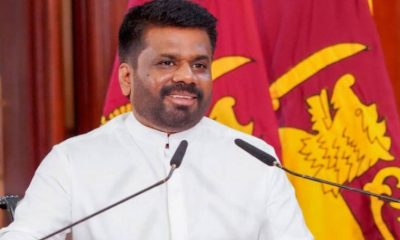
 News2 days ago
News2 days agoPresident warns his party: “We will fail if we view power as an entitlement to do as we please”
-
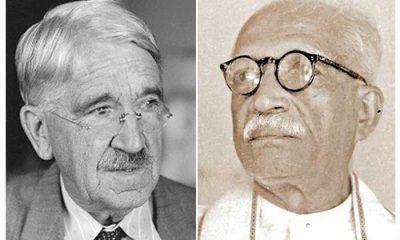
 Features6 days ago
Features6 days agoEducation, democracy and unravelling liberal order
-

 Opinion6 days ago
Opinion6 days agoAre cracks already showing ?
-

 Editorial5 days ago
Editorial5 days agoWhen millers roar and Presidents mew











